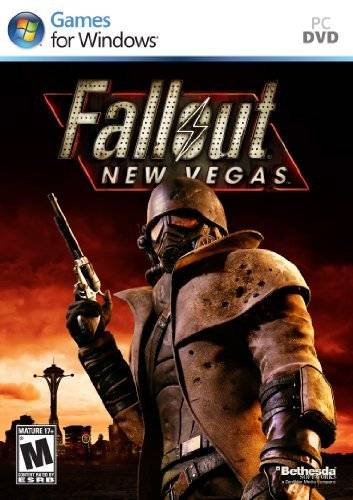Fallout: New Vegas Interview
-
Category: InterviewsHits: 22026

Article Index
Page 1 of 3
Fallout: New Vegas' PR showed a cavalcade of interesting imagery, from the return of classic super mutants to the brightly lit Strip. Curious to learn more about the aesthetic, we interviewed art director Joe Sanabria and lead concept artist Brian Menze about the artistic ideas and processes behind some of the novelties we'd seen. Please keep in mind that this interview was sent in prior to the game's release, so some of the questions may have lost some relevance. There's still plenty to take in, though:
GB: Tell us a bit about your day-to-day responsibilities on Fallout: New Vegas and how they've evolved throughout the game's development. What other team members do you work with on a daily basis, and what processes are required to bring something from the concept stage to actually having it implemented in-game?
Brian: I'm the lead concept artist and only full-time concept artist on FNV. My responsibilities include providing a clear image for 3D artists to build game assets from, providing 2D in-game assets such as billboards, signs, logos, and posters as well as doing some icons and Vault Boys. My role hasn't evolved much, but I do tend to be more involved in critiquing the character models more now than I did in the beginning. I work with nearly everyone in the art department and many of the designers. Depending on the item I'm conceptualizing, I deal mostly with the designer who's made the request and the modeler who will eventually build it and of course my art lead, Joe. I talk a lot with the animators as well to be certain something I'm thinking about or something that was requested can be done and work with them to find solutions if the initial idea is too crazy.
Getting something into the game starts with an idea or a request from a designer, which is then given over to me, to create a visual representation of that idea for everyone to understand what it will look like and possibly how it may function. I draw up as much as I can, sometimes iterating with the designer or my art lead, until the image is approved by Joe. Once the concept is approved, it's passed on to the modeler who is scheduled to build the thing. Implementation is handled differently depending on if the item is a character, creature or poster and there ends my involvement.
Joe: My day to day responsibilities are to direct the art staff and coordinate with other project leads to make sure the game looks good. In the early stages I'm working on gathering reference images and sketching up ideas and concepts.
As the project evolves, I work with production and the leads to track the work and make sure we are meeting our project goals. During this time I'll be busy working on concept pieces for the team. As the work comes to an end I'll do more and more play-testing of the game and send out notes to the team.
GB: New Vegas seems to come across a bit brighter than Fallout 3, thanks to such elements as the lights on The Strip and the lighter color of the sky. From an art design standpoint, why did you feel it was necessary to introduce some additional color to the post-nuclear world?
Brian: Some of us, myself included, have worked on previous Fallout titles and have always wanted to introduce a bit more color to the world of Fallout. As an artist, brown sometimes gets very challenging to use over and over again without getting really repetitive, so the artists were thankful that we had an opportunity to add some color to FNV. Though, we tried to keep those splashes of color where it looked natural, as we didn't want to make Fallout into something else. Fallout has a very distinct look and we, of course, wanted to maintain that.
Joe: I work with the project director, associate producers, level designers, programmers and on occasion the sound designers on a daily bases.
To bring an idea from a concept to in-game, can range from simple to pretty complicated. A complex concept like say the Strip, will require a team to coordinate on a bunch of tasks, over a few months.
To keep it manageable we break up the work into a series of small goals. In the case with the Strip, at first we just focus on the scale of the structures and the layout, afterwards we then focus on getting the textures and materials dialed in, and then work on setting up the lights and adding AI and scripted events etc. During which we are making optimizations to the art and design to make sure it's running without any issues.


